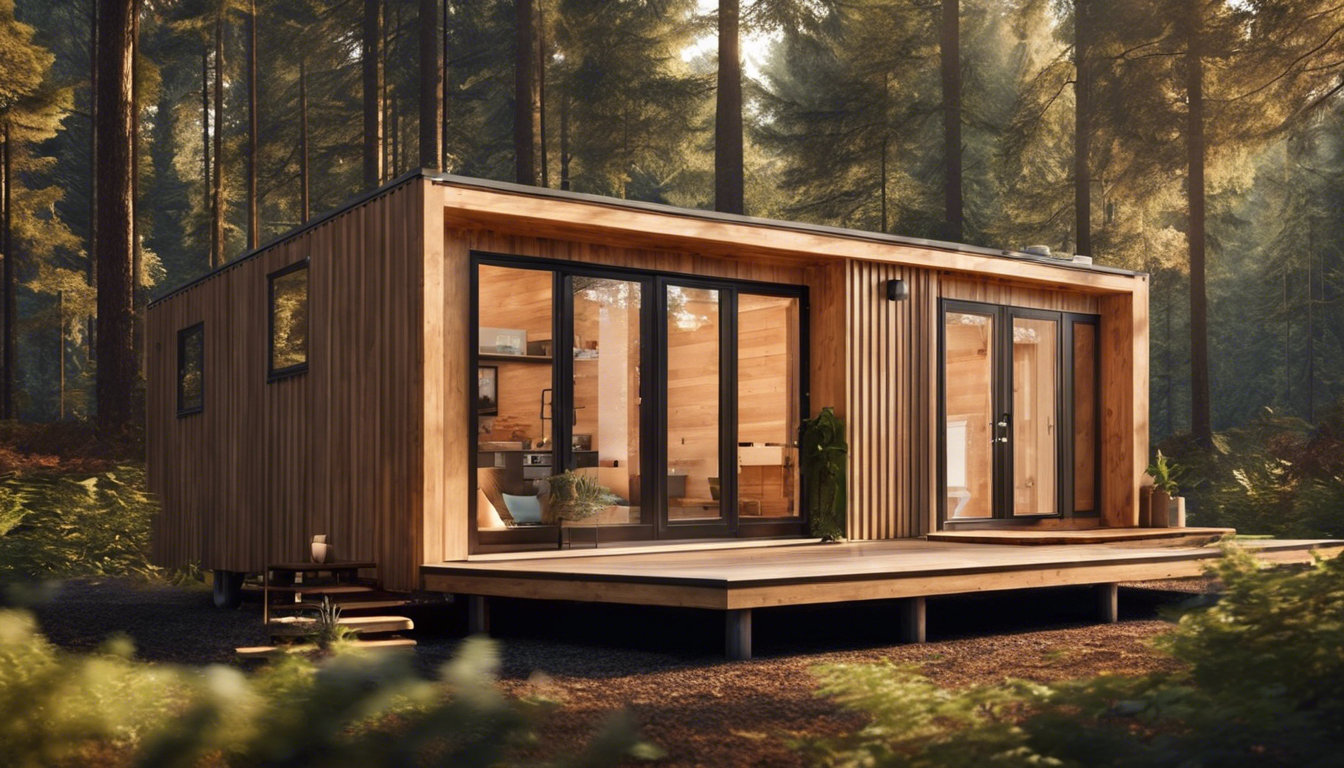Prefab tiny homes are an innovative solution for those looking to simplify their lives while promoting sustainable living.
These homes are prefabricated, meaning they are built off-site and assembled later, often resulting in quicker construction times and less waste.
This article will explore the various aspects of prefab tiny homes, including their definition and types, environmental benefits, cost efficiency, design options, and lifestyle considerations.
Whether you are an eco-conscious individual or simply someone interested in downsizing, understanding prefab tiny homes can help you make informed decisions about your living situation.
The Most Popular Modular/Tiny Home On Amazon
Cost Efficiency: Is a Prefab Tiny Home Worth It?
Prefab tiny homes offer a range of benefits that many buyers find appealing.
First, they are typically more affordable than traditional homes.
Constructing a prefab tiny home usually costs less because the building process is streamlined and materials are pre-manufactured.
This efficiency can lead to significant savings on labor and time.
Buyers also enjoy lower utility bills due to the smaller size, which contributes to overall cost efficiency.
Additionally, many prefab tiny homes are designed with sustainability in mind, reducing energy consumption.
For those looking to downsize or simplify their lives, a prefab tiny home can be an economical choice that provides financial freedom with lower maintenance costs, making it an attractive option for many.
Design and Customization: Making Your Tiny Home Unique
Prefab tiny homes offer a great opportunity for customization, allowing homeowners to create a space that reflects their personal style and needs.
With various designs available, you can choose layouts that maximize functionality.
Many manufacturers provide options for floor plans, materials, and colors, enabling you to select elements like siding, roofing, and interior finishes.
Some prefab tiny homes come with additional features like eco-friendly options, which enhance sustainability.
Whether you prefer a minimalist aesthetic or a cozy, rustic feel, customizing your prefab tiny home ensures it meets your unique preferences.
This versatility not only adds personality to your living space but also makes your home truly yours.
Living Sustainably: Lifestyle Considerations for Tiny Home Owners
Tiny home living supports sustainability through smart choices.
Prefab tiny homes offer several benefits for eco-conscious homeowners.
First, these homes use fewer materials than traditional houses.
This reduction leads to less waste and a smaller carbon footprint.
Second, prefab tiny homes often include energy-efficient designs.
Many feature solar panels, insulation, and energy-saving appliances.
These features help reduce utility costs and lower energy consumption.
Additionally, living in a smaller space encourages minimalism.
Owners usually prioritize essential items and focus on experiences rather than possessions.
This lifestyle shift helps decrease overall consumption.
Lastly, many tiny home communities emphasize local resources and sustainability practices.
By connecting with like-minded neighbors, residents can share ideas and resources.
Overall, choosing a prefab tiny home is a practical step toward a more sustainable lifestyle.
Frequently Asked Questions
What are prefab tiny homes?
Prefab tiny homes are prefabricated houses designed for efficiency and functionality, typically smaller than traditional homes.
They are constructed off-site in controlled factory settings and then transported to their final location.
What are the environmental benefits of living in a prefab tiny home?
Prefab tiny homes have a smaller ecological footprint than larger homes, requiring fewer materials and less energy for heating and cooling.
Their compact size encourages sustainable living, reducing waste and resource consumption.
Are prefab tiny homes cost-efficient?
Yes, prefab tiny homes can be cost-efficient due to lower initial costs, reduced energy bills, and minimal maintenance expenses.
They often provide a more affordable housing solution compared to traditional homes.
Can I customize my prefab tiny home?
Absolutely!
Many manufacturers offer a variety of design options and customization features, allowing you to tailor the layout, materials, and interior finishes to fit your personal style and needs.
What lifestyle considerations should I keep in mind when living in a tiny home?
Living in a tiny home requires downsizing and prioritizing essential items.
It’s important to embrace minimalism, efficient organization, and potentially a shift in lifestyle towards community living or alternative housing solutions.




Leave a Reply